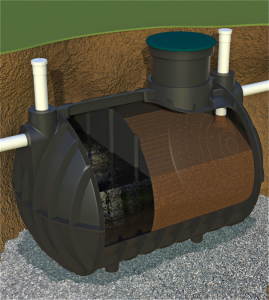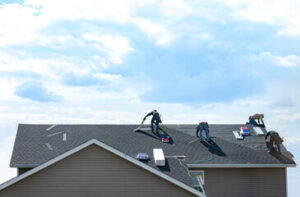Septic tanks collect wastewater and waste from toilets, sinks and garbage disposals and hold it in a buried tank. Solid waste settles at the bottom, forming sludge, and oils and grease float to the top, forming scum.
Bacteria break down these solids, and the treated wastewater exits into a buried drain field. A septic system prevents water contamination in surface and groundwater by removing sewage pollutants before they reach natural bodies of water. Contact Septic Tank Armadale now!

A septic tank is the first stage of wastewater treatment for your home. It is designed to hold waste from your household plumbing for an adequate time so that microorganisms can break down the solid waste and treat the liquid wastewater (effluent). The septic tank removes these solids from the waste before they exit your drain field, which can otherwise become waterlogged with untreated sewage.
The septic tank also contains a series of baffle walls that separate the wastewater into three distinct layers. Oils and grease float to the top of the tank, while wastewater and septic solids settle to the bottom of the tank in a layer known as sludge. The septic tank must be properly maintained so that the sludge layer does not build up to the point that it clogs the outlet pipe or drain field. This is accomplished by pumping the septic tank as needed and avoiding flushing non-biodegradable materials such as cigarette butts, cotton buds/swabs, and menstrual hygiene products.
During the septic tank process, bacteria generate gases that must be vented to prevent the pressure from building up and causing a blockage. These gases are released through a vent pipe located on the lid of your septic tank. This vent is typically a mushroom shape and can be fitted with a charcoal filter to reduce odors.
Once the septic tank is full, a tee pipe connects from your septic tank to an opening in the ground known as your absorption field or drain field. The tees ensure that only the liquid wastewater flows out of your septic system, and that no sludge or scum is pushed into the drain field. This prevents a clog and the premature failure of your septic system.
The drain field is an area of soil that allows liquid waste to seep through the soil and into groundwater or natural watercourses. To avoid contamination of the soil, the drain field is often located in a low lying area on your property. Depending on your septic tank design, the drain field may consist of multiple drain lines or just one large drain line.
How does a septic tank work?
The waste from your home drains into a septic tank which is underground. Solid wastes settle to the bottom of the septic tank, while grease and other lightweight materials float to the top of the wastewater (effluent). As the septic tank holds the water for a period of time, bacteria and yeasts break down the organic waste. The resulting liquid wastewater (effluent) then leaves the septic tank to be absorbed by soil in the drain field. The septic tank removes the large solid waste particles from the wastewater that would otherwise clog the drain field.
A septic tank may have one or more baffle walls which separate the different layers of solid waste in the tank. A baffle wall at the inlet of your septic tank directs the raw wastewater downward and reduces wastewater agitation, allowing more solid waste to sink and less water to float. This allows the sludge layer to be more effectively separated from the wastewater containing bacteria and lighter materials.
Your septic system has a network of perforated pipes connecting the septic tank to the soil absorption field. The liquid wastewater flows from your septic tank through the distribution pipe into your drain field. The soil in the drain field absorbs the effluent, treating it as it percolates through it. The soil also provides a buffer that helps to protect the environment and human health by reducing the amount of sewage that seeps into groundwater and surface waters.
Septic tanks with pumps typically have alarms that alert you when the pump needs servicing or the septic system is overflowing. Keeping septic systems properly maintained will help to extend the life of your tank and avoid costly repairs and replacement costs.
You can help prevent your septic system from clogging or failing by keeping the flow of wastewater to a minimum, especially in hot weather or after heavy rains. Water conservation practices and limiting the number of people taking showers or washing clothes at once can also reduce the load on the septic system. Avoid placing driveways, parking areas or other impermeable surfaces over the drain field and keep tree roots away from it.
How often do I need to pump my septic tank?
Having the septic tank pumped regularly is one of the biggest factors that determine how long it lasts. The tank needs to be emptied when the sludge level reaches about 1 foot at the bottom or when the scum layer is about 6 inches thick at the top. This will vary according to household size, use of garbage disposal and other variables.
If the septic tank is pumped too often, it reduces the bacteria levels in the septic system and can lead to premature failure of the septic system. It takes about 1-3 weeks for the septic system to reach the healthy bacteria levels required to function properly again after pumping.
Most septic systems will need to be pumped at least every five years. However, the tank will need to be pumped more frequently in larger households or if there are children living at home. If you’re unsure how often you should have your septic tank pumped, check with our professional staff and we can give you a recommendation based on your household size and tank size.
In addition to keeping your septic tank pumped, there are some things you should never put into your septic system. These include paint thinner, polyurethane, antifreeze, certain dyes, disinfectants and water softeners. The septic system is designed to handle the waste from your house, but not these products which can kill the bacteria and cause major problems in the septic tank and drain field.
A healthy septic tank contains anaerobic bacteria that breaks down the waste in a first stage and sends it to the drain field for further treatment. A regular pumping schedule keeps the sludge and scum layers separated and allows the anaerobic process to work efficiently.
Regularly having the septic tank pumped also helps to keep the absorption field, drain line or leach field from becoming waterlogged or clogged. If these fields become clogged, they may not be able to accept the sewage waste and it will start flowing into household drains. This can lead to health hazards for your family, especially if there are young children in the home.
What is the best way to maintain my septic tank?
Many homeowners make the mistake of assuming that as long as their used water “goes away,” their septic system is working properly. However, the only way to know whether a septic tank is truly treating sewage is by having it regularly inspected and pumped. Common signs that a septic system is not functioning as intended include wastewater seeping into homes and yards, sewage surfacing in lakes or rivers, excessively strong odors from drains or toilets, and high levels of coliform bacteria in well water tests.
While the best thing you can do to ensure your septic system works as it should is to have it inspected and pumped at least once every three years, there are several additional steps you can take to keep your septic system healthy and functioning properly. These include:
Avoid using chemical drain openers. These can clog your drains and damage your septic tank and drain field. Instead, try boiling water or using a drain snake. Reduce your use of a garbage disposal, since this can add a significant amount of fats, oils and solids to your septic tank. If you must use a disposal, limit the number of times per day that it is used.
Don’t run a laundry washing machine more than once or twice a day, since too many loads will overwhelm your septic tank. Excessive washing loads also prevent your septic system from having sufficient time to naturally cleanse and disinfect the wastewater that is sent to it. Consult your septic tank professional to determine the gallon capacity of your tank and the maximum number of wash loads you should perform each day.
Inspect your septic tank baffles to make sure they are not missing, broken, or deteriorated. The baffles restrain and redirect the flow of septic tank sludge and scum to help prevent them from clogging inlet and outlet pipes.
Never plant trees or shrubs within 30 feet of your septic system or drive vehicles or heavy equipment over the drainfield. These plants may grow roots that can clog the pipes. Instead, plant grass or other shallow-rooted plants that can absorb some of the rainfall.


